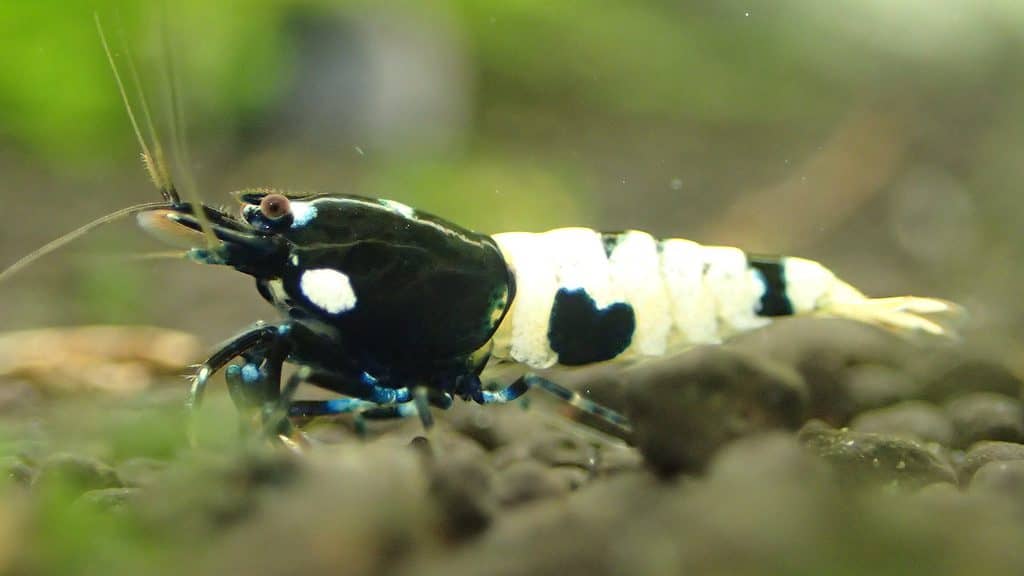Biofilm the key to shrimp breeding
Hello shrimp enthusiasts! Welcome to Mark’s Shrimp Tanks. Today, we’ll dive into the most important aspect of successful shrimp keeping – biofilm.
Biofilm is a key component to a thriving shrimp tank. By adding more nutrients and food sources to the water, you can encourage the growth of biofilm. One of the most effective ways to do this is by feeding your shrimp powdered fish flakes. This not only provides a protein-rich environment for your shrimp, but it also creates a biofoam in the glass that is like nothing else.
Powdered fish food is an affordable option compared to other shrimp food options, and can be easily made by grinding fish flakes in a coffee grinder. Goldfish flakes contain around 30% protein, while cichlid flakes can have as much as 50% protein. The more protein your shrimp receive, the more eggs they can produce from the biofilm.
In recent months, Mark has noticed a significant improvement in his tanks by feeding his shrimp powdered fish food. He’s seen a drastic decrease in shrimp deaths and a significant increase in shrimp activity. Mark’s tanks are now thriving with green and brown algae on the bio rings and glass, as well as a baby boom of blue dream shrimp.
In conclusion, feeding your shrimp powdered fish food is a cheap and effective way to encourage the growth of biofilm in your tanks. The benefits are clear – more protein for your shrimp to produce eggs, an increased population of shrimp, and a thriving tank with millions of microfauna. So, what are you waiting for? Start feeding your tanks with powdered fish food and watch your tanks come to life!
is a cheap and effective way to encourage the growth of biofilm in your tanks. The benefits are clear – more protein for your shrimp to produce eggs, an increased population of shrimp, and a thriving tank with millions of microfauna. So, what are you waiting for? Start feeding your tanks with powdered fish food and watch your tanks come to life!
In conclusion, adding more nutrients to the water through feeding fish flakes in powdered form can greatly enhance the growth of biofilm in your shrimp tank. This can result in healthier and more active shrimp and a baby boom in your tank. Powdered fish flakes are a cost-effective alternative to other expensive shrimp foods, and the higher the protein content, the more eggs the shrimp can produce. If you’re looking to improve the health and happiness of your shrimp, give this method a try. Happy shrimp keeping!
FAQ
Q: What is shrimp tank biofilm? A: Shrimp tank biofilm is a thin, slimy layer of microorganisms that form on surfaces inside a shrimp tank, such as the glass walls, decorations, and substrate. It is made up of bacteria, algae, fungi, and other microorganisms that form a complex community.
Q: Is shrimp tank biofilm harmful to shrimp? A: No, shrimp tank biofilm is not harmful to shrimp. In fact, it can serve as a natural food source for many species of shrimp, as well as other invertebrates and small fish in the tank.
Q: How can shrimp tank biofilm be beneficial? A: Shrimp tank biofilm can be beneficial in several ways. It can serve as a food source for shrimp and other small organisms in the tank, help maintain water quality by removing excess organic matter, and promote the growth of beneficial bacteria that help break down waste.
Q: How can shrimp tank biofilm be removed? A: It is generally not necessary to remove shrimp tank biofilm, as it is a natural and beneficial part of the tank ecosystem. However, if it becomes unsightly or excessive, it can be removed through regular tank maintenance, including partial water changes and cleaning of surfaces.
Q: How can shrimp tank biofilm be encouraged? A: Shrimp tank biofilm can be encouraged by providing a healthy and balanced ecosystem in the tank, including proper filtration, feeding, and water quality. Overfeeding should be avoided, as excess organic matter can lead to the growth of harmful bacteria and parasites. Adding natural materials such as leaves or driftwood can also help promote the growth of biofilm.

